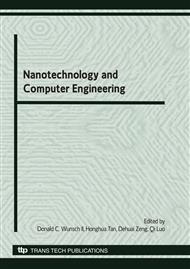p.558
p.563
p.569
p.574
p.579
p.585
p.591
p.596
p.600
The Basic Tacit Knowledge Acquisition Model of Industrial Organization and its SD Simulation
Abstract:
Knowledge is increasingly becoming one of the most important productive factors those which create the value of the industrial organization. In fierce market competition, the tacit knowledge is the vital resource for corporation to build and obtain competition advantage. From the perspective of the basic model of tacit knowledge acquisition, this paper studies how the tacit knowledge spreads between two corporations, and uses the theory of System Dynamics (SD) to analyze it by the method of Computer-aided Simulation.
Info:
Periodical:
Pages:
579-584
Citation:
Online since:
June 2010
Authors:
Keywords:
Price:
Сopyright:
© 2010 Trans Tech Publications Ltd. All Rights Reserved
Share:
Citation:


